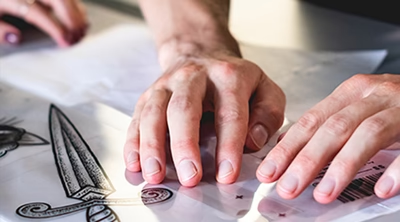Plastisol Ink Reducer - Why and How to Use
Ink reducer is a plastisol ink additive that reduces an inks viscosity. In simpler terms, it’s a chemical that you add to plastisol ink that makes the ink a bit thinner and easier to handle.
When printing with a plastisol ink you are going to get a thicker deposit of ink on the shirt, which is expected. Plastisol ink is much thicker than water-based ink and therefore has different handling characteristics. The thicker body of the plastisol ink makes it a little harder to work with.
This is where ink reducer comes to save the day. Curable reducer will be your next best friend if you print with plastisol and are having a hard time with the inks viscosity or want a nice soft hand feel on the shirt. The additive reducers the inks viscosity but still cures at the same temperature of your ink. While ink reducer sounds like a must have plastisol ink product it does have some characteristics that you should be aware of.
Things to consider before using curable reducer:
It is possible to add too much reducer to your ink. Too much reducer is going to make your inks viscosity drop and could affect its opacity. Opacity is the opaqueness of the color. If you adjust the opacity too much you can completely alter the ink color. For example, too much curable reducer in navy blue will give you a different lighter shade of blue.
Once the reducer is added to the link it cannot be undone.
How to use:
These instructions are specific to Ecotex® Screen Printing Curable Reducer.
We recommend mixing 2%-5% by weight to the ink as a starting point. Up to 10% can be added to the ink before affecting opacity.
Example:
For 10 Grams of ink use .2 - .5 grams of reducer.
We suggest that you do a test print to check bleed, color strength, and opacity after the reducer is added. If you want to further the soft hand feel, use curable reducer and combine that with a high mesh count, which allows less ink to pass through. This means less of an ink deposit left behind and you have an even softer feel on your shirt.
This post is originally published on Screen Print Direct

.webp)


Comments
Post a Comment